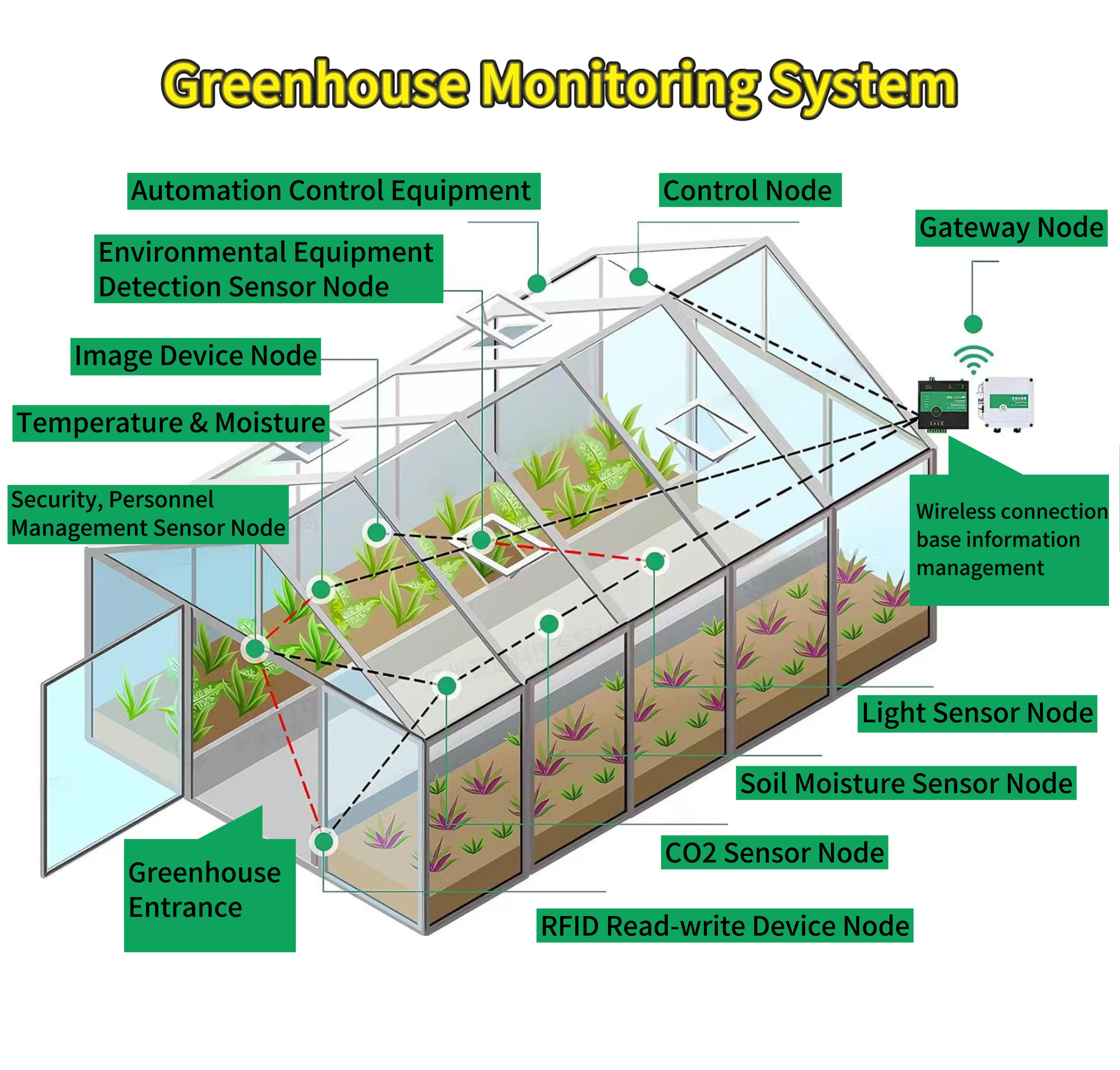 |  |
The traditional greenhouse environmental monitoring mostly relies on manual inspection to collect and record data, the response speed is not timely enough, and it is difficult to grasp scientific and dynamic real-time intelligent data. The rapid development of Internet of things technology and application in agriculture provide strong technical support for the intelligent, dynamic and real-time collection of greenhouse environmental monitoring data.Through the Internet of things technology, it is possible to realize the real-time monitoring and transmission of greenhouse internal environmental data, and provide timely and accurate data support for agricultural production. Therefore, intelligent collection of greenhouse environmental data has become a key means to realize agricultural modernization and improve agricultural production efficiency.Greenhouse environmental monitoring is generally achieved by deploying various Internet of Things sensors to realize real-time monitoring of environmental factors such as air temperature and humidity, carbon dioxide concentration, soil temperature, soil moisture, and light intensity inside the greenhouse. The data is uploaded and analyzed, compared, and displayed through a software platform. Users can remotely view the real-time environmental data of the greenhouse via a computer or mobile phone.At the same time, by setting the upper and lower thresholds of each environmental data on the platform, combined with the comparative analysis of real-time collected data, the early warning information is pushed in time when the limit is exceeded, so as to dynamically grasp the environmental changes in the greenhouse in time and provide data support for further management measures.To ensure the accuracy and comprehensiveness of environmental parameter collection by sensors in greenhouses, it is often necessary to consider the use of high-precision sensors and rationally distribute them at different heights and positions within the greenhouse. By summarizing and analyzing the data collected from each position and height, the differences in data at each point can be judged, and precise data can be comprehensively obtained.
In response to the current development trend of intelligent monitoring of greenhouse environment, in order to achieve all-round intelligent monitoring of environmental factors in greenhouses, BGT-Hydromet, by applying modern science and technology and combining with the actual needs of users, has developed various types of greenhouse weather stations and data collectors. It can simultaneously collect environmental parameters such as temperature, humidity, illuminance, carbon dioxide concentration, and soil moisture. At the same time, it can freely combine monitoring parameters according to user needs. With features such as quick access, it greatly reduces the problems of wiring, networking, and repeated installation, ensuring the comprehensiveness of the monitored environmental factor data. To provide decision-making basis for the intelligent application of the following greenhouse environmental monitoring data:

| Parameter | Impact on Crops | Control Measures |
|---|---|---|
| Air Temperature | Affects photosynthesis/metabolism | Activate heaters/fans |
| Air Humidity | High humidity promotes disease; low causes wilt | Control misting/ventilation |
| Light Intensity | Drives growth stages; insufficient light weakens plants | Adjust shades/lamps |
| CO₂ Concentration | Critical for photosynthesis (optimal: 800–1200 ppm) | Manage ventilation |
| Soil Moisture | Over/underwatering harms root health | Automate irrigation |
| Soil Nutrients | NPK levels directly affect crop quality | Precision fertilization |

Transmission layer: 4G/5G, LoRa, NB-IoT and other wireless communication technologies are used to ensure stable data transmission back to the data center.
Platform layer: Based on cloud computing and big data analysis, view trends on PC/mobile (graphs, alerts, historical comparisons).
Monitoring control and intelligent management of the vegetable greenhouse environment, to ensure that crops have a good, suitable growth environment, to increase production, improve quality, adjust the growth cycle, improve economic efficiency, and then achieve the goal of intensive agricultural production, high yield, high quality, efficient, ecological and safety.